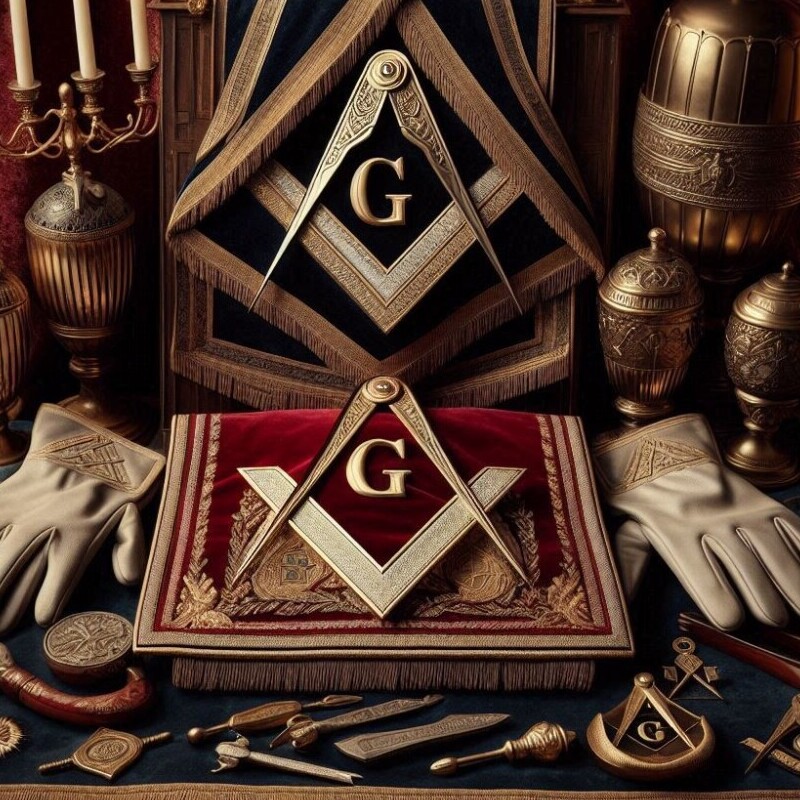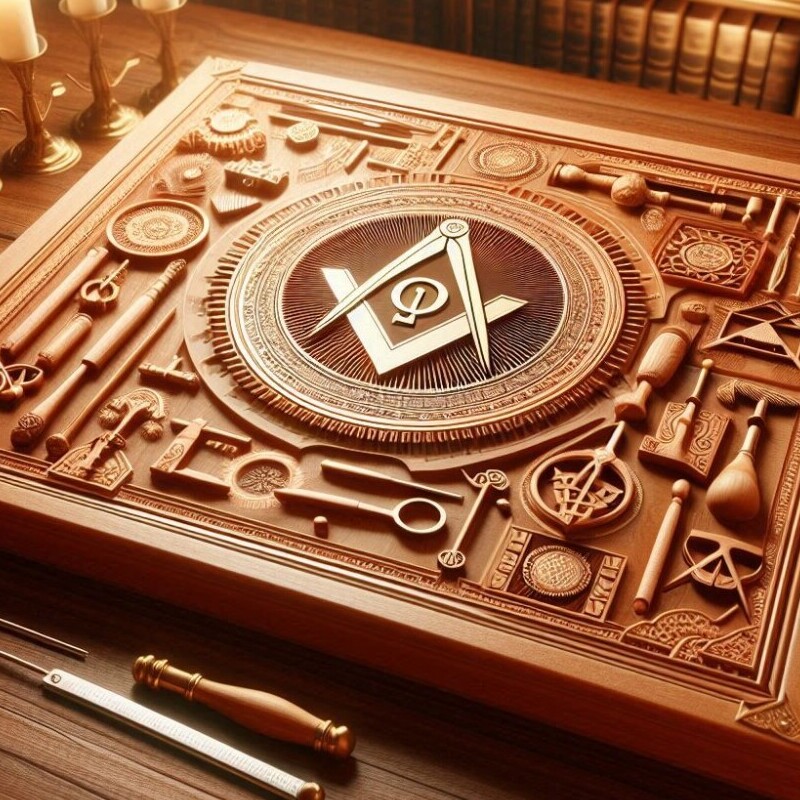Freemasonry, often shrouded in mystery and intrigue, has a rich history that stretches across centuries. It’s not just a secret society but a brotherhood with strong ethical ideals and a vibrant tradition. To really get the essence of Freemasonry, one needs to understand its visual language, especially the logos and symbols it uses.
At the heart of Freemason iconography is the iconic Square and Compass. Till date, it’s one of the most recognizable symbols. The square represents morality, hinting at the idea of getting one’s personal and social acts ‘on the square’. The compass stands for personal boundaries and self-control, central tenets for Freemasons.
Beyond the Square and Compass, you’ll often find symbols like the Letter G. Freemasons interpret this in varying ways. Some say it stands for ‘God’, pointing to the divine presence they acknowledge. Others believe it refers to ‘Geometry’, the foundational science that underpins their architectural and mathematical interests.

One can’t miss the All-Seeing Eye, also called the Eye of Providence. It represents divine watchfulness and guidance, a motif seen repeatedly in Freemasonry and beyond, echoing themes of spiritual awareness and protection.
Geometry reigns supreme in Freemason logos, not just visually but philosophically. The precise lines and shapes capture the essence of cosmic laws and universal truths integral to Freemason teachings. They emphasize the harmony and order that Freemasons aim to bring into human behaviour and thought.
Colour schemes within these logos aren’t just for aesthetics. Each colour choice holds its own significance. For example, gold often ties to enlightenment and wisdom, blue represents calmness and peace, integral to Freemason values. Understanding these gives a deeper appreciation of the Freemasonry ethos.
Freemason symbols have found their way into popular culture. They’re everywhere from movies like ‘National Treasure’ to literature like Dan Brown’s thrillers. These appearances spark curiosity but often lead to wild conspiracy theories.
Despite their presence, Freemason symbols are misunderstood. Many see them as secretive or sinister, feeding into numerous myths. But, at their core, these symbols represent values such as fraternity, integrity, and charity.
For those within the Freemason lodges today, these symbols aren’t just historical relics. They hold practical importance, used during ceremonies and rites to convey messages, educate members, and guide them through their personal development journeys.
Freemason logos, with their complex symbolism, continue to fascinate people worldwide. They reflect the enduring legacy of Freemasonry, connecting past traditions with present-day practices while maintaining a sense of mystery and intrigue.

Amazon Associates Disclosure
In compliance with the Amazon Associates Operating Agreement and the U.S. Federal Trade Commission (FTC) guidelines, we want to make the following disclosure regarding the use of affiliate links on this website.
masonicregaliaworldwide.com is a participant in the Amazon Services LLC Associates Program, an affiliate advertising program designed to provide a means for sites to earn advertising fees by advertising and linking to Amazon.com and affiliated sites.
This means that when you click on product links on this site and make a purchase through Amazon, we may receive a small commission at no additional cost to you. These commissions help support the ongoing maintenance of this website, including content creation, hosting, and other expenses.
We only recommend products and services that we personally use, trust, or believe will add value to our readers. However, it’s always recommended that you conduct your own research before making any purchase based on our recommendations.
Your trust matters to us, and we are committed to providing honest, transparent content. Affiliate commissions do not influence our editorial content or product evaluations.
If you have any questions about our affiliate relationships, please feel free to reach out via our contact page.
Thank you for your support!

Hey Martin, your article brings the intricate world of Freemason symbolism to life! I particularly enjoyed how you explained that the symbols aren’t just historical relics, but hold practical importance in guiding members’ personal development.
Given the deep philosophical meaning behind the geometric shapes and precise lines, I’m curious: are there any specific geometric principles or theorems that are particularly emphasized in Freemasonry, and how do they relate to the “cosmic laws and universal truths” you mentioned?
Eric
Hey Eric,
Firstly, thank you so much for the kind words! I’m really glad the article resonated with you.
You’ve touched on a fascinating aspect—geometry truly is central to Masonic symbolism, not just in form but in meaning. One of the most emphasized principles is the 47th Proposition of Euclid, also known as the Pythagorean Theorem. In Freemasonry, it’s more than just a mathematical truth it represents the harmony of the universe and the pursuit of knowledge and order.
Another key symbol is the compass and square, tools of geometry that also serve as moral guides: the square encourages us to act justly, while the compass reminds us to draw boundaries around our desires and conduct.
These geometric principles speak to structure, balance, and proportion qualities mirrored both in nature and in ethical living. In that way, geometry becomes a bridge between the material and the metaphysical, a tool for understanding both architecture and the architecture of the self.
Thanks again for such an insightful question!
Best,
Martin